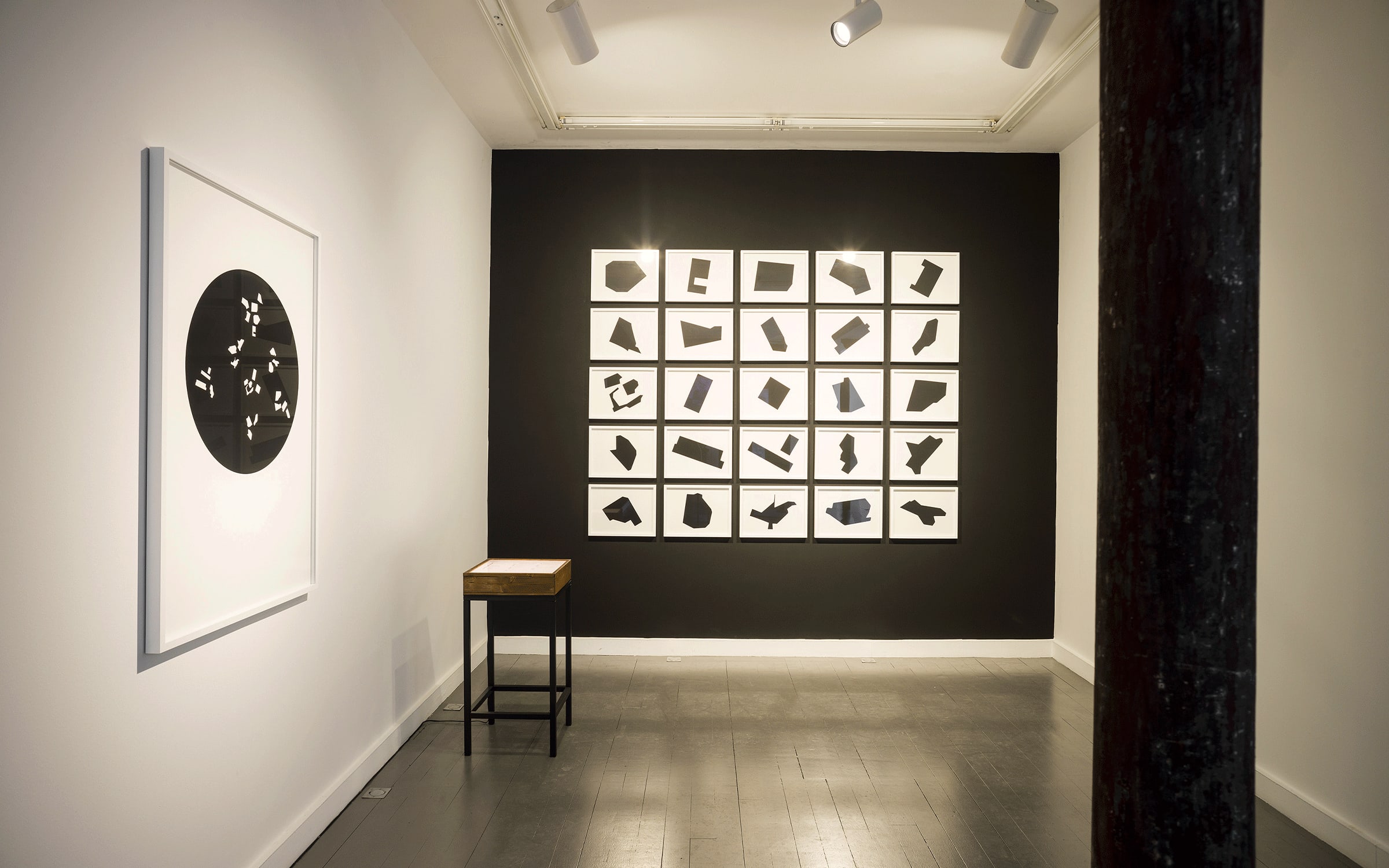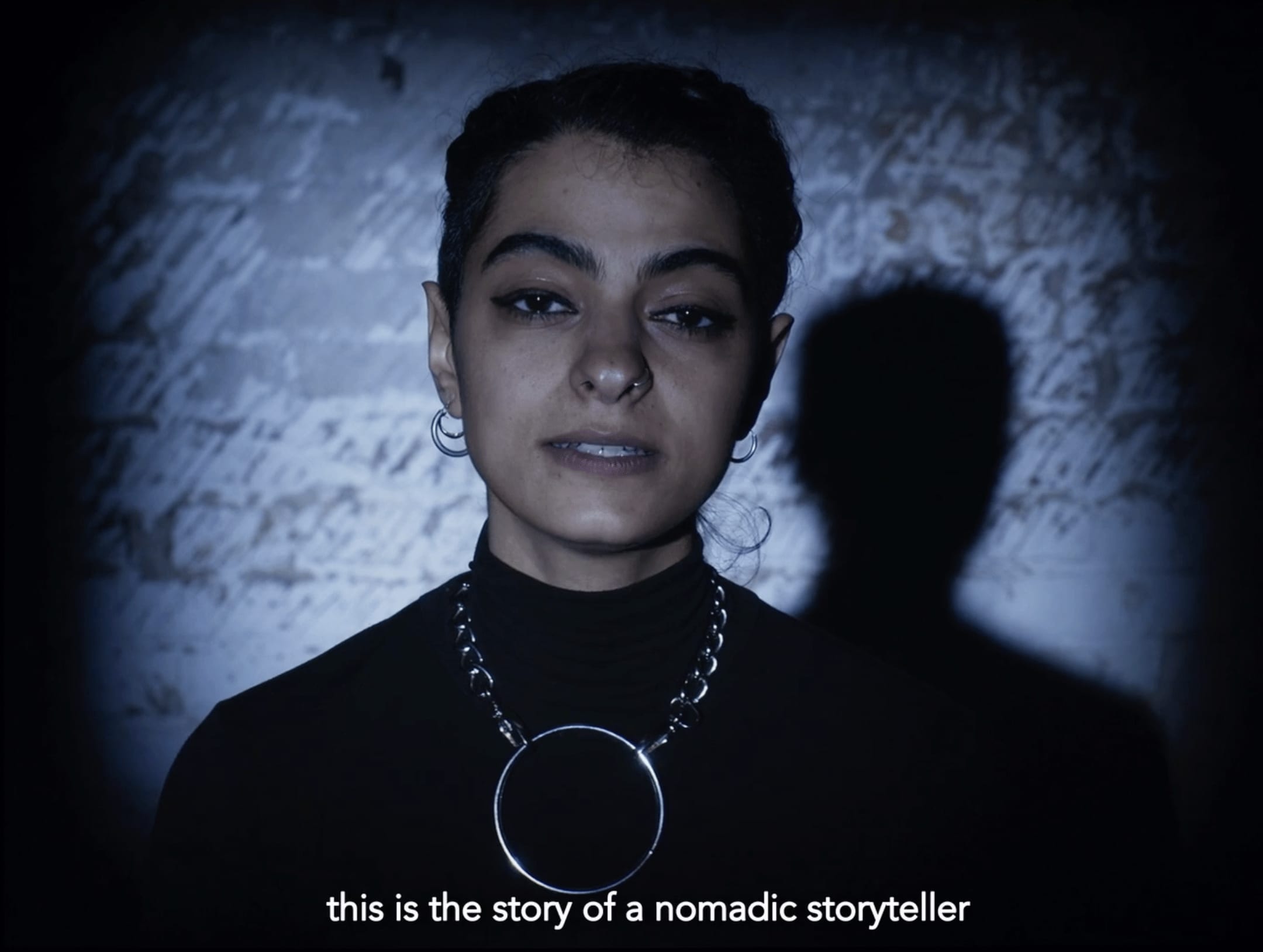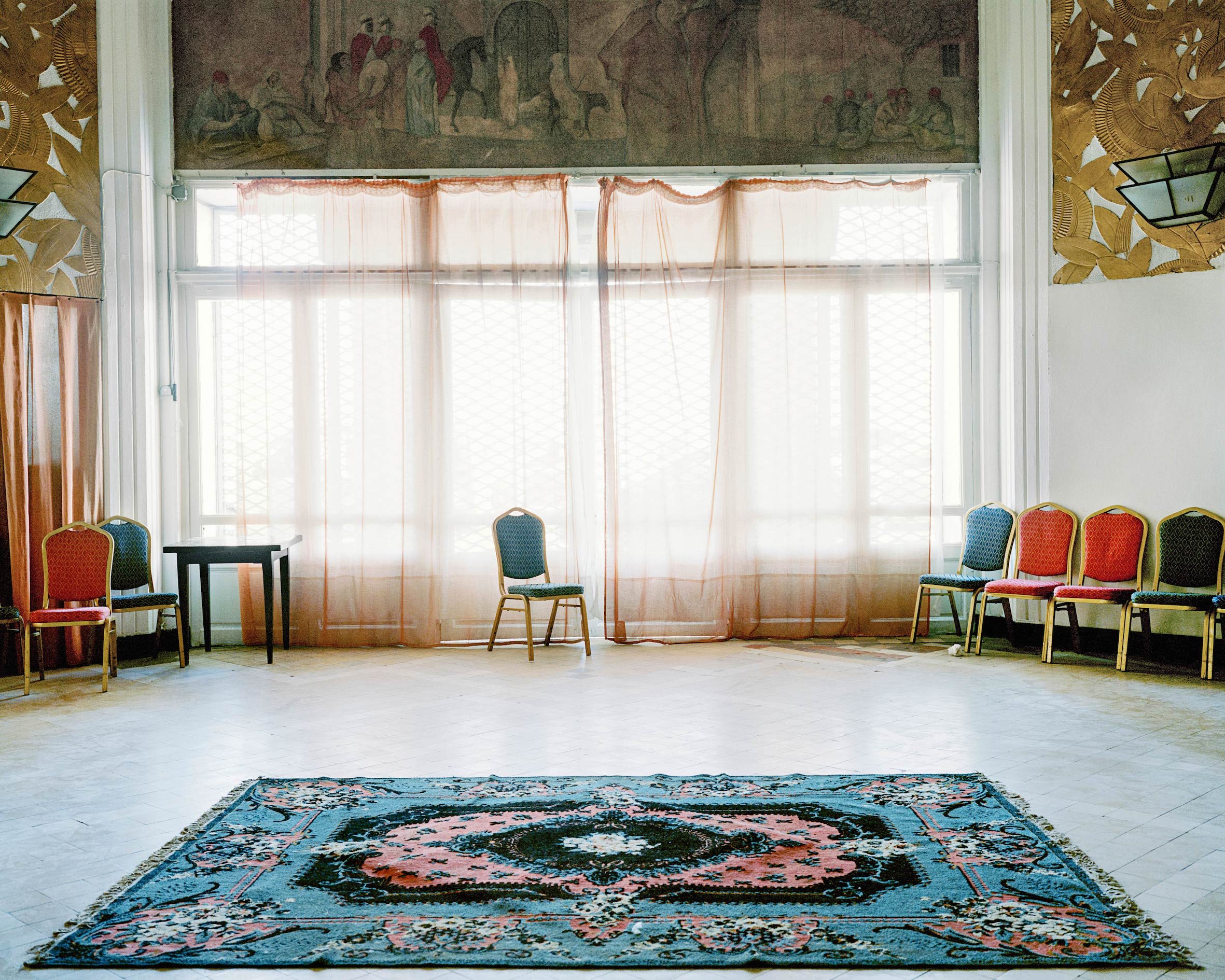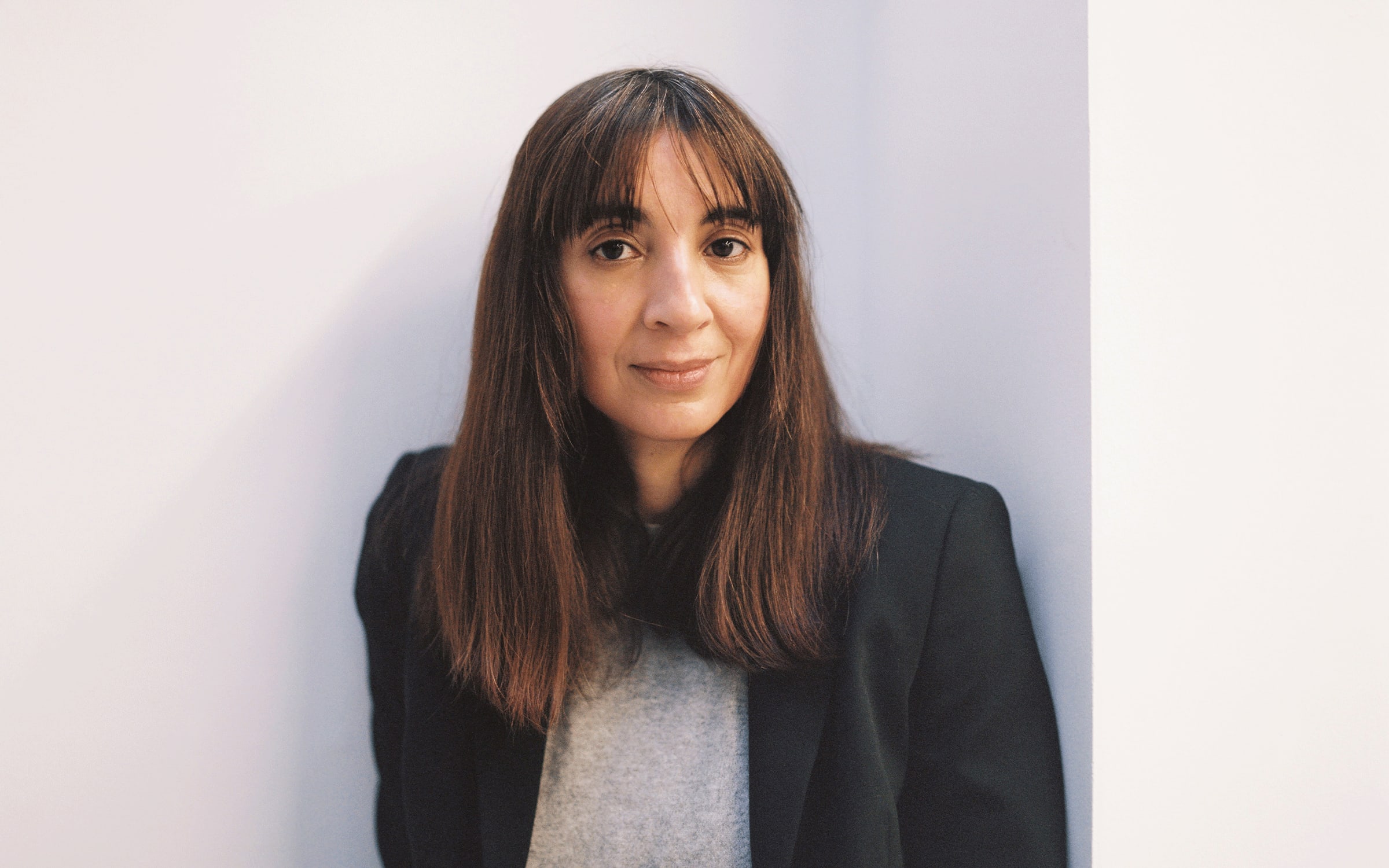‘I hope that one day, I too will be considered a storyteller. In Morocco, where I was born, oral storytelling is fundamental; I’m very proud of the culture that I come from, of my grandmother who was illiterate but a remarkable storyteller and weaver. Being a storyteller comes with responsibility!’
Bouchra Khalili is already a storyteller: One who carries you with her through the twists and turns of her stories and thoughts. Her exhibition at mor charpentier – her first at a Paris gallery in 10 years – is proof of it. The artist continues to spin the web that has consumed her since the beginning of her career, weaving together family histories of decolonization movements and revealing little-known stories of solidarity between people from the Global South.

Her heroes are present throughout her work; from poets and filmmakers like Jean Genet, Pasolini, and the Moroccan director Ahmed Bouanani, to the Black Panthers, and the pioneering activist and documentary filmmaker Carole Roussopoulos. They’re ‘like ghosts,’ she tells me on the terrace of a café in the Marais neighborhood of Paris, just before heading back to Berlin where she has lived for 10 years, and only a week before being nominated for the 2023 Marcel Duchamp Prize. With a large, black felt hat on her head and a camel coat, she, too, seems to be transported from another era.
Her 2015 project Foreign Office took her to Algiers, which was the ‘mecca for revolutionaries’ in the 1970s. The film that came out of this research explored the Black Panther Party’s impact on the newly independent nation. In her exhibition, photographs awaken the memory of those places that bore witness to these struggles and discussions. It was a history totally unknown to the public, the French in particular. But Khalili grew up with it.

‘I have amazing teachers when it comes to history – my parents,’ she said. ‘Their generation didn’t know borders, it was the generation of the poetry review Souffles, which was utterly North African. I grew up with tales of what was happening at the time in Algiers. In the end my mother summed up my work well: “You are telling the stories of people like us”.’
Khalili knows now that when she decided to study art at a school in the Paris suburb of Cergy, it was, of course, to have access to tools. ‘But I already had an idea of the work I was going to make. I have always known the story of Foreign Office. I probably became an artist just so I could tell it.’
Khalili was given her first camera for her 16th birthday and soon realized that it was an object made for her. ‘But I resisted doing photography for a long time, because I was aware of the responsibility that comes with it,’ she explained. After hesitating for a long time, she finally decided to work with video rather than go into cinema, because she had a feeling that she would have more freedom.
‘Self-taught but with a good theoretical foundation,’ is how she describes herself. She now works on her projects right from A to Z; from the filming to the editing. ‘I always edit myself,’ she says. She co-founded the Cinematheque Tangier 15 years ago with Yto Berrada. ‘I film in order to then edit, because it’s only then that I work out the project. I’m very sensitive to the rhythm, how the cuts I’ve made breathe, the musicality.’ A habit that comes from the 10 years that she spent haunting the Cinémathèque Française, watching two films a day, squeezed between seminars with Jean Rouch.

Her new work, The Magic Lantern (2020–22), brings together two of her favorite ghosts: Carole Roussopoulos, already mentioned in Foreign Office because ‘she went to Algiers to give video lessons to Black Panthers,’ and Jean Genet.
Horrified by the Jordanian army’s massacre of Palestinian refugees, Roussopoulos travelled to Jordan with Genet in 1970. He disappeared for several months, which gave rise to Prisoner of Love (published posthumously in 1986). Roussopoulos saw violence against an entire people. Extremely nomadic and revolutionary, her analog Portapak camera was her weapon of war; she was the first to use it, along with Jean-Luc Godard.

Khalili took this first film, The Nero of Amman (1971), as a starting point. But at that time, videos had no master version. ‘Every time the film was shown, the film strip deteriorated a bit more,’ she explains. ‘What was important for her, was to bear witness, not to create a piece of work. She was a listener, one of those filmmakers who is at home in cinema.’
Khalili is now trying to capture the essence of that film, of which only three minutes remain, using a slightly strange language, ‘a sort of trans-Arabic, which mixes different dialects.’ As a format for her story, she goes back to the art of phantasmagoria, which she studied for a long time. ‘When I was a student, I had a seminar at the Cinémathèque on ancient forms of cinema, and ever since I’ve been fascinated by magic lanterns, for their liberating potential.’
She is particularly inspired by Étienne-Gaspard Robertson, who, at the end of the 18th century, used his ‘ghost machine’ to summon the spirits of the revolutionaries Robespierre and Marat who had been executed a few years before. Like shadow puppets, there are also the ghosts of Genet, Roussopoulos, and that of another female pioneer, Alice Harris, who used phantasmagoria to criticize the atrocities committed by King Leopold II in the Congo at the end of the 19th century.
‘It’s an optimistic study of ghosts,’ says Khalili, ‘just like my work: A way of keeping alive the spirit of the revolution.’ What more beautiful definition could there be?

Another of her obsessions features throughout the exhibition: Maps. They crop up across her body of work, ever since she retraced the awful journeys taken by migrants in the form of constellations. This time, a map of the world evokes ‘Carole’s archipelago, with all of the countries where her films were shown, meeting women fighting for something,’ from Algeria to the United States.
Unsurprisingly, the map is turned around, off center, and its countries scattered over the wall. ‘I often make abstract work that has to be deciphered, but I always include clues,’ she says. ‘I like these instructional gestures that are hidden in detours, in the margins – that’s how ideas are formed.’

It’s the same for her hidden tribute to Kateb Yacine, in a series of photographs taken in the theater where he rehearsed his plays in Arabic and Amazigh. ‘I have immense admiration for him, because he was an écrivain public [a writing professional], just as I was when I was a teenager in Paris. I was deeply moved when I read his account of his experience. Is écrivain public perhaps a metaphor for a form of artistic practice?’
There is one thing that she is sure of: ‘Artists are not absent from historic responsibility; they are not solely producers of shapes. We far too often forget that migrants and their descendants have an imaginary world, that they too are historicized. How do you reclaim that heritage from power’s grip; what do we do with the memory of the struggle of a people who we say don’t have a history? I’m an optimist – or rather, an organized pessimist: thinking about the issue of the heritage that we have been deprived of is, in my opinion, a step towards the future. There is a documentary aspect in my work, but also a fictional one, in the way that Deleuze intended: In fantasy, there are the people to come.’
Bouchra Khalili is represented by mor charpentier (Paris, Bogota).
‘The Magic Lantern’
mor charpentier, Paris
Until February 25, 2023
Emmanuelle Lequeux is a writer based in Paris.
English translation: Catherine Bennett.
Published on February 16, 2023.
Caption for full-bleed images, from top to bottom: 1. Bouchra Khalili, The Magic Lantern (video installation, 27’13”), 2020-2022. Courtesy of the artist and mor charpentier. 2. Bouchra Khalili, Cinema El Hillal, Ex-Triomphe, Headquarter of the PAIGC delegation (African Party for the Independence of Guinea and Cape Verde), Fig. 1 : Hall, 2015. Courtesy of the artist and mor charpentier. 3. Bouchra Khalili, The Magic Lantern (video installation, 27’13”), 2020-2022. Courtesy of the artist and mor charpentier. 4. Installation view of Bouchra Khalili’s exhibition ‘The Magic Lantern’, mor charpentier, Paris, 2023. Photographs by Marion Berrin for Art Basel.